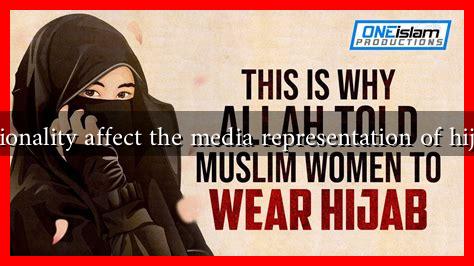-
Table of Contents
How Does Intersectionality Affect the Media Representation of Hijab-Wearing Women?
In recent years, the conversation surrounding the representation of hijab-wearing women in media has gained significant traction. This discourse is deeply intertwined with the concept of intersectionality, which examines how various social identities—such as race, gender, class, and religion—intersect to create unique experiences of discrimination or privilege. Understanding how intersectionality affects media representation is crucial for fostering a more inclusive and accurate portrayal of hijab-wearing women.
The Concept of Intersectionality
Coined by legal scholar Kimberlé Crenshaw in 1989, intersectionality provides a framework for understanding how overlapping identities can compound experiences of oppression. For hijab-wearing women, this means that their representation in media is not solely influenced by their choice to wear the hijab but also by factors such as race, ethnicity, socioeconomic status, and geographic location.
Media Representation: A Double-Edged Sword
The media plays a pivotal role in shaping public perceptions of hijab-wearing women. However, this representation can often be problematic. Here are some common themes in media portrayals:
- Stereotyping: Hijab-wearing women are frequently depicted as oppressed or submissive, reinforcing harmful stereotypes.
- Exoticization: Media often exoticizes hijab-wearing women, presenting them as mysterious or foreign, which can lead to fetishization.
- Marginalization: Positive stories about hijab-wearing women are often overshadowed by negative narratives, leading to a lack of diverse representation.
Case Studies: The Impact of Intersectionality
To illustrate the impact of intersectionality on media representation, consider the following case studies:
- Muslim Women in Western Media: In Western media, hijab-wearing women are often portrayed through a lens of fear and misunderstanding, particularly in the context of terrorism. For instance, the portrayal of Muslim women in films like “American Sniper” often reinforces negative stereotypes, overshadowing their individuality and agency.
- Social Media Representation: Platforms like Instagram and TikTok have allowed hijab-wearing women to share their stories and challenge stereotypes. Influencers such as Amani Al-Khatahtbeh and Noor Tagouri use their platforms to promote positive narratives, showcasing their diverse experiences and identities.
- News Coverage: During events like the Women’s March, hijab-wearing women have been both included and excluded in media narratives. While some outlets highlighted their participation, others failed to represent their voices, reflecting a broader trend of marginalization.
Statistics and Research Findings
Research indicates that media representation significantly impacts public perception. A study by the Media Diversity Institute found that:
- Only 12% of news stories featuring Muslim women focus on their achievements or contributions to society.
- Over 60% of portrayals of Muslim women in film and television are negative, often depicting them as victims or extremists.
These statistics underscore the urgent need for more nuanced and diverse representations of hijab-wearing women in media.
Moving Towards Inclusive Representation
To improve the representation of hijab-wearing women, media creators and consumers can take several steps:
- Promote Diverse Narratives: Encourage media outlets to feature stories that highlight the achievements and voices of hijab-wearing women.
- Support Independent Creators: Amplify the work of hijab-wearing filmmakers, writers, and artists who offer authentic perspectives.
- Engage in Critical Consumption: Audiences should critically evaluate media portrayals and advocate for more accurate representations.
Conclusion
Intersectionality plays a crucial role in shaping the media representation of hijab-wearing women. By understanding the complexities of their identities and experiences, we can work towards more inclusive and accurate portrayals. As consumers of media, it is our responsibility to challenge stereotypes and support diverse narratives that reflect the rich tapestry of hijab-wearing women’s lives. Only then can we hope to foster a more equitable media landscape that honors their stories and contributions.
For further reading on this topic, you can explore resources from the Media Diversity Institute.


